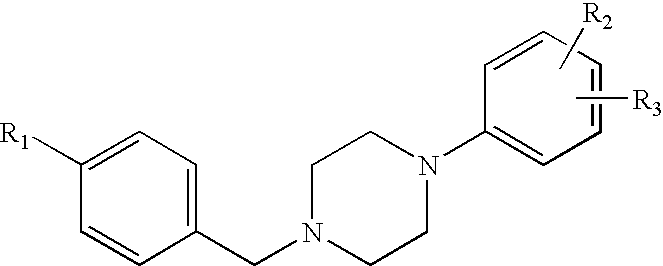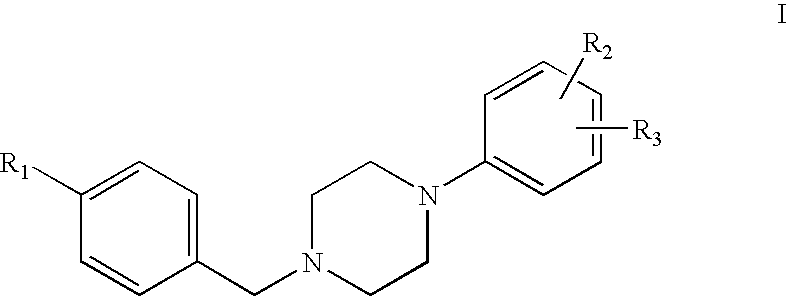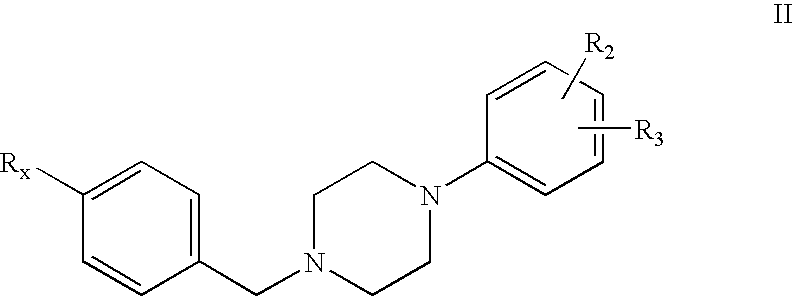1-phenyl-4-benzylpiperazines dopamine receptor subtype
- Summary
- Abstract
- Description
- Claims
- Application Information
AI Technical Summary
Benefits of technology
Problems solved by technology
Method used
Image
Examples
example 1
1-(4-chlorophenyl)-4-(4-chlorobenzyl)piperazine dihydrochloride (Compound I)
[0061] A mixture of 1-(4-chlorophenyl)piperazine (1.61 g, 0.01 mole), 4-chlorobenzyl chloride (2.10 g, 0.01 mole) and potassium carbonate (2 g) in acetonitrile (40 mL) is heated at reflux for 6 hours under a nitrogen atmosphere. After cooling, the reaction mixture is poured into water (50 mL) and ether (50 mL). The aqueous layer is discarded and the organic layer is extracted with 1 N aqueous hydrochloric acid solution. The acidic extract is neutralized with 6 N ammonium hydoxide solution and extracted with ether. The organic layer is dried (Na2SO4) and concentrated to provide the crude free base of the desired unsymmetrically substituted piperazine. This material is dissolved in warm isopropanol (10 mL) and treated with a 1 N solution of HCl in ether until acidic to pH paper. Upon cooling, crystals of dihydrochloride salt are collected (2.2 g, 56%).
PUM
| Property | Measurement | Unit |
|---|---|---|
| Molar density | aaaaa | aaaaa |
| Molar density | aaaaa | aaaaa |
| Molar density | aaaaa | aaaaa |
Abstract
Description
Claims
Application Information
 Login to View More
Login to View More - R&D
- Intellectual Property
- Life Sciences
- Materials
- Tech Scout
- Unparalleled Data Quality
- Higher Quality Content
- 60% Fewer Hallucinations
Browse by: Latest US Patents, China's latest patents, Technical Efficacy Thesaurus, Application Domain, Technology Topic, Popular Technical Reports.
© 2025 PatSnap. All rights reserved.Legal|Privacy policy|Modern Slavery Act Transparency Statement|Sitemap|About US| Contact US: help@patsnap.com



